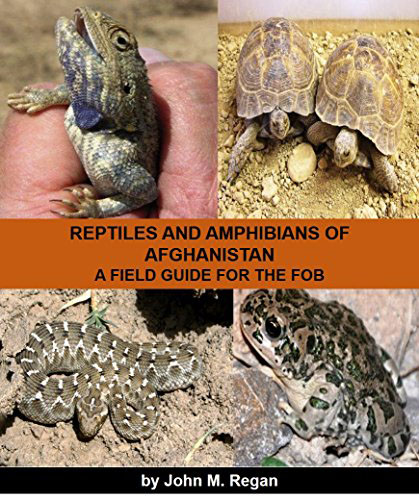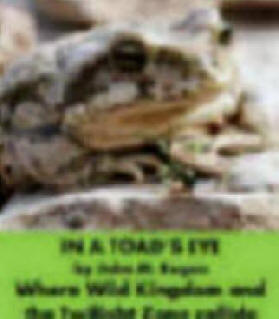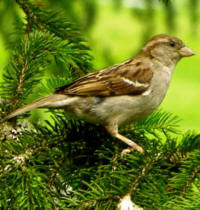

< >
Afghan Arabia Wild
Afghanistan Wildlife
The photos on this page and the subsequent pages were taken while I was in Afghanistan doing defense work. Although nearly every picture was taken inside an American or NATO forward operating base, I did manage to snap a surprising array of creatures. Much, much more exists "outside the wire." But this is not a country for wandering. And that is truly a tragedy for the animal enthusiast over here. But if you were able to wander about this beautiful land you could see snow leopards, bears, sand cats, hyenas (I've observed them on several occasions), porcupines and host of other exotic and surprising species. Afghanistan is overwhelming in its wonderful scenery and relatively unpopulated for a country about the size of Texas. I regret not being able to travel freely. The good news is that my work takes me around the country so I have the opportunity to see a number of different regions. A sample of the tiny ice berg tip that I can see from inside Forward Operating Bases and several airfields are shown below. For more pictures and detail click on any of the links above or at the bottom of the page.
Here are some photos from down south in Kandahar Province. Kandahar sits smack in the middle of the Afghan desert; the photos below were snapped in early June 08 and the temperature was already well above 100 degrees Fahrenheit.
To the left is a lizard is one I nicknamed Rock Basker, it is actually a type of one of the many species of agama lizards over here. A little smaller than the ones I found in Saudi, but still possessing an incredible tolerance for heat. These guys are out in the middle of the afternoon in the hottest part of the day - and loving it. Just like their Saudi cousins these reptiles have an unusual habit of letting you get very close to them. On the right is a common Afghan species and one of the largest I've seen here; about twelve inches long and thick bodied, I have found these fellows throughout the eastern half of the country from 1000 feet to almost 10,000 feet above sea level. On the far right is a Saw Scaled Viper, considered by some to be the most dangerous serpent in the world due to the number of bites it delivers to humans each year. Small but very aggressive and well camouflaged they are attracted by the mice and other rodents around human homes.
Naturally, the Afghanistan wildlife landscape includes camel spiders. The pictures you are looking at above are pretty close to life size, and there are several other different types as well. These are not arachnids to fool with and this one was not at all happy with me and my intrusive camera. Despite their name these guys are not spiders. They are classified under the order Solifugae and are more closely related to scorpions. These guys get to be about three inches or so long and they can be aggressive. They are not, however, anywhere near as large or dangerous as the deceptive and outright ridiculous images floating around the net recently.
< >
Dragonflies seem to be everywhere on earth. Even though we associate them with ponds and other pockets of water they seem to like the desert, too. Looking like a space alien is an Afghan Praying Mantis. I might have gotten a better shot, but I was afraid to harm him. This particular mantis looked like a cross between a praying mantis and a walking stick. Very unique insect.
There is actually a wide variety of mammalian wildlife here in Afghanistan, but they are difficult to photograph from the confines of my location. On the left is an Afghanistan porcupine; actually a crested porcupine. That is not a cage; he is burrowed in on the other side of the compound fence. I've unfortunately lost the photo I had of one of these guys in its den. These porcupines are surprisingly large; the one in the photo was nearly three feet long. Unlike the North American variety they seem to eat just about anything. Needless to say we have plenty of rodents over here, and a mess of hedge hogs thanks to the perfect home sites we provided underneath the thousands of connexes in the FOBs. To the right is one of the many I have found under my billets. For a better picture of a hedge hog follow this link: hedge hog.
Afghanistan boasts a beautiful array of butterflies. The one in the upper left is the most stunning example I have seen anywhere.
There are plenty of Afghan spiders. This small black and white specimen is a Cobweb Weaving Spider according to the good folks at the Scarab Society in Seattle.

One of the things that charms me about wildlife in the commonality of species found in many countries around the world. Pictured above are a couple of examples. I cannot think of a country I have been to that is without sparrows. Although they display some color variation, the ones here tend to be darker, they are amazingly similar birds no matter where you encounter them. Their adaptability is superb. The black and white Magpie is common here as are the ever present pigeons and doves. And sometimes you get a real surprise - like this brown eagle I found right on the Kandahar Airfield. I was driving through a crowded marketplace in Kabul one day and a fellow tried to sell me one of these beautiful birds. He had it tucked under his arm.
One of the wild kingdom's all time champions of adaptability is the ant. The one on the left is a large type, well over a quarter of an inch long. Descending the scale in size, but topping all other species in numbers are these red black ants in the middle. Tinier still are the little black fellows on the right.
These little fellows are very interesting, but I have no idea what the crimson bits are. It looked like tiny bits of dried red pepper. There were quite a few scattered about the nest and I often found the same thing in other nests of this species. They scrambled to save their eggs, and I noticed one very large egg that they struggled with. A queen or queen to be perhaps? I am not sure.
< >